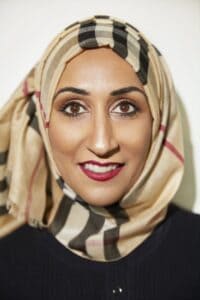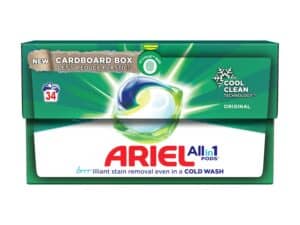New app to help products become more accessible for people with visual impairments
New technology is helping products to be more accessible for people with cognitive impairments through an app called NaviLens, which allows users to scan products with a unique code using the camera of their device to obtain important information about the packaging and product, such as ingredients and instructions.
The information is relayed either by audio or large clear text, in a clear manor and language native to where the phone originates, and locates where the product is with great accuracy using a sonified Augmented Reality.
NaviLens technology has the ability to scan more than 12 times further away than dense QR or barcodes, which means users do not have to be precise to use the app.
The technology has seen a huge pick-up with major corporations like Procter and Gamble (P&G), Aunt Bessies and Coca-Cola.
According to Humanity & Inclusion, one billion people around the world live with some form of disability, making up around 15 percent of the global population, which is why it is so important for organisations to innovate and grow in accessibility.
NaviLens says people with disabilities do not have the same access to product information, which is why P&G’s Ariel has launched its newest and “most innovative” packaging solutions to date, the ‘Ecoclic Box.’
Sam Latif, Company Accessibility Leader, P&G, has a visual impairment. She said: “My hope is more people are able to shop and access products independently, something that most people take for granted. For people like me, a basic task like browsing and buying everyday products can be really challenging – you aren’t able to see what you have to choose from, meaning you often stick to what you know as opposed to trying something new.
Ariel’s new Ecoclic Box features its own NaviLens code, having taken over four years to finesse after rigorous testing with over 2,500 consumers across Europe including parents and those with dexterity, sight, and cognitive impairments.
It also includes a newly created tactile marker to help those with visual, dexterity or cognitive impairments. Endorsed by the University of Cambridge for its inclusivity, the new tactile marker, which is embossed on the outside of the box on the top panel is shaped like a washing machine, this has been developed by P&G to help people with sight loss identify they’re buying a detergent.
Sam continued: “With NaviLens, blind and low vision people can use many accessibility features. Through the NaviLens app, users can see the range of products on shelf, be guided to them through haptic feedback with sound cues and read their related information.
“We introduced NaviLens first to Pantene this year and then expanded to our Ariel, Fairy and Bold Pods business.
“In addition to NaviLens, we also introduced a simple tactile symbol on our laundry pods packs to help communicate the product purpose through touch, i.e. that it is a detergent.
“We’re also focusing on inclusion for strength, dexterity and safety, which is why we aim to make our products easier to open and use, while remaining inaccessible to children. The Ariel EcoClic box encompasses the latest steps in our inclusive design journey.
“We remain committed to our journey – one within which we endeavour to create an equal and inclusive world for everyone – both within our organisation, and in wider society.”
Recently, Microsoft and Haleon worked together to make health products more accessible for people with vision impairments via AI technology that narrates product labels.




